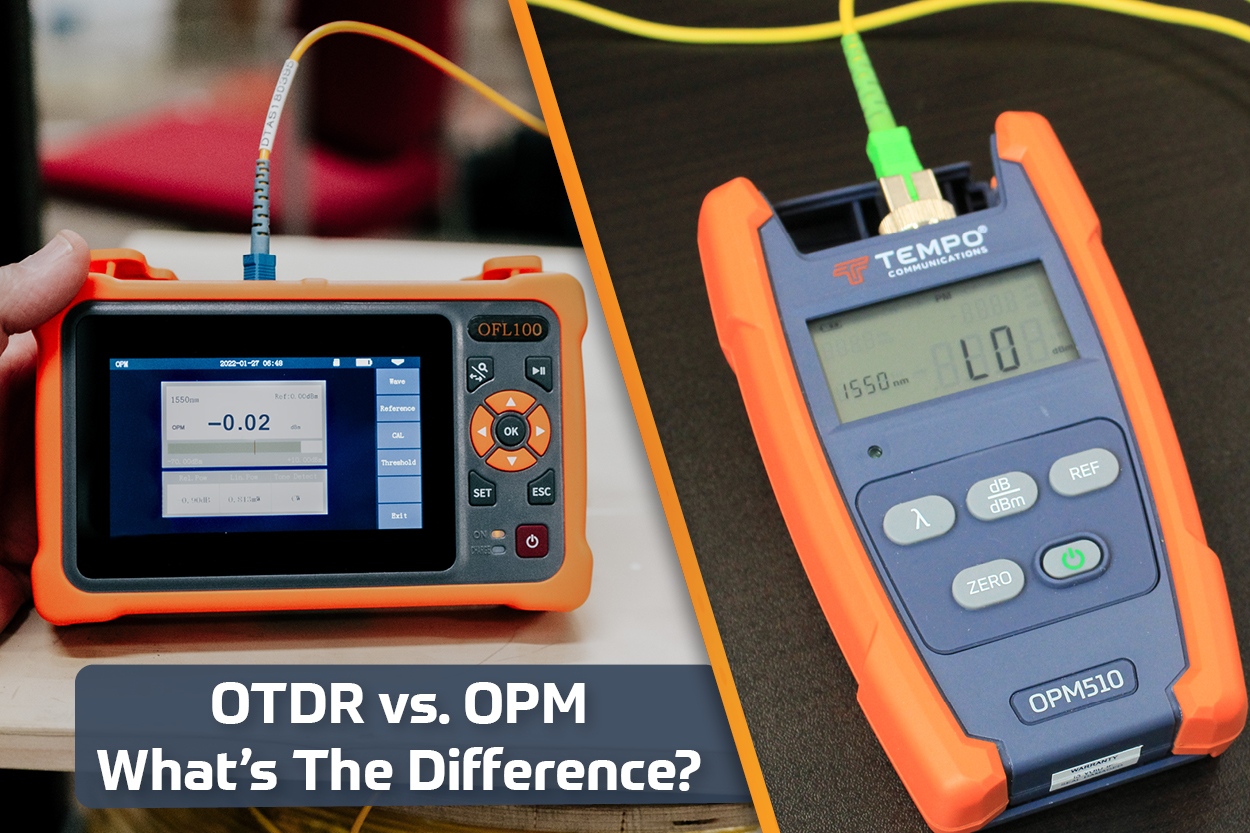Stay up to date with Tempo Announcements and News

OTDR vs. OPM: Which Tool Reigns Supreme in Fiber Optic Testing?
In today's interconnected world, fiber optic networks play a vital role in high-speed data transmission. To ensure these networks' reliability and performance, comprehensive testing and maintenance are essential. Two key tools used in fiber optic testing are the Optical Time Domain Reflectometer (OTDR) and the Optical Power Meter (OPM). Here, we will examine the key differences between OTDRs and OPMs and when to use them.
What is an OTDR?
The Optical Time Domain Reflectometer (OTDR) is a powerful device used to analyze the characteristics of a fiber optic cable. By measuring the backscattered and reflected light along the cable, the OTDR provides valuable information about the fiber link's length, loss, and quality. It detects events such as splice and connector reflections, helping technicians troubleshoot issues and ensure optimal network performance. The OTDR presents this information through graphical traces, known as reflective traces, which visually represent the fiber's physical characteristics.
What is an OPM?
The Optical Power Meter (OPM) measures the power or energy of light transmitted through a fiber optic link. It provides accurate and precise power measurements at specific points in the network. The OPM plays a crucial role in certifying power levels, testing transmission links and components, and monitoring optical power levels in active systems. Unlike the OTDR, the OPM does not provide a graphical representation of the fiber's physical characteristics. Instead, it focuses solely on power measurement in dBm or mW.
Key Differences between OTDR and OPM:
Measurement Focus:
OTDR: Analyzes the entire fiber link, providing detailed information about events and losses along the cable.
OPM: Measures optical power at specific points in the network, focusing on power levels rather than the fiber's physical characteristics.
Information Provided:
OTDR: Presents graphical traces, offering insights into the fiber link's length, loss, and reflective events (splices, connectors).
OPM: Provides precise power measurements at specific locations but lacks the graphical representation of the fiber's physical characteristics.
Applications:
OTDR: Ideal for troubleshooting fiber optic links, characterizing networks, and verifying cable installations and certifications.
OPM: More suitable for verifying power levels, testing transmission links and components, and monitoring optical power levels in active systems.
Selecting the Right Tool:
When choosing between OTDR and OPM, several factors should be considered:
Purpose of the measurement: Determine if you need to troubleshoot, certify, install, or monitor power levels in the network.
Type of network: Consider whether it is a long-haul, metro, access, or data center network.
Budget and available resources: Evaluate the financial constraints and available expertise for using the tools.
In some cases, it may be beneficial to use OTDR and OPM together to gather comprehensive information about the fiber optic link. While the OTDR provides detailed insights into the fiber's physical characteristics, the OPM ensures accurate power measurements at specific points.
Understanding these differences is crucial for effective fiber optic testing and maintenance. The OTDR offers detailed information about the fiber link's length, loss, and reflective events, making it an invaluable tool for troubleshooting and characterizing networks. The OPM focuses on precise power measurements, making it ideal for verifying power levels, testing transmission links, and monitoring optical power in active systems.
By considering the measurement purpose, network type, and available resources, you can select the appropriate tool, or combination of tools, to ensure reliable and high-performance fiber optic networks. So, whether you need to delve into the physical characteristics of the fiber or verify power levels, OTDR and OPM are your go-to tools in the world of fiber optic testing.
Using an OTDR with a built-in OPM is an ideal option for fiber technicians who want to ensure they have everything they need on the job site. This offers simplified testing, savings on cost and space, enhanced integration and compatibility, boosted efficiency and accuracy, and streamlined reporting. The OFL100 from Tempo Communications has all of these features and more. The OFL100 has an integrated visual fault locator (VFL) and a built-in optical power meter, making it the perfect companion for any fiber technician. These features, combined with the OFL100's intuitive user interface, make it easy for technicians of all skill levels to conduct any test necessary to maintain their fiber networks. You can learn more about the OFL100 and all its advantages at https://www.tempocom.com/products/ofl100/.
